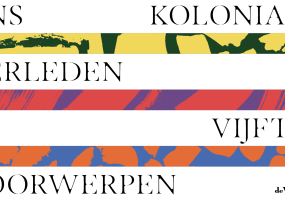Seminar Report: ‘Digital transformation - The Organisation Challenges’
24 Mar 2017
The advent of the digital era has created a challenging environment for many media organisations. What's more, for classic media, this change is considered as a crisis rather than a new opportunity. How can the media overcome such a crisis and survive in the digital era?
Lucy Keung proposed three premises to understand the roadmap of digital transformation:
First Premise: "Now we are at the end of the digital beginning"
Keung suggested that we are now at the end of the beginning of the digital era. The internet is now two decades old. ‘New media’ is no longer ‘new’ and a new media system has established itself. As a result, the structure of the strategic environment media firms must contend with is now relatively clear. A key aspect of this is increased complexity inside media organisations. Over the past fifty years, new technological layers have progressively been added to the industry. Its scope has gradually expanded from its traditional mass media origins, adding a layer of niche products in the 1980s, an online layer in the 1990s, and a social media/mobile layer from around 2008 onwards. These developments have presented media companies with more complexity and stretched their resources, even if at the same time as it has brought audiences an amazing increase in choice. By virtue of the complexity of their organisations and the span of their activities, established media inevitably are less agile than social media-based companies, which focus on a single layer of the media system, and less able to adapt quickly to keep up with the changes in the digital environment.
The advent of the tech platforms – Google, Amazon, Facebook and Apple, has further changed the strategic environment. With their ‘hyperscale’, the concept of 'mass' has had to be redefined. The ‘mass media audiences’ old media were designed to represent only a small fraction of these companies’ audiences. Furthermore, increasing amounts of digital advertising income is flowing to the new platforms away from classic media. The advent of these 'hyper-scale' digital platforms has also dramatically expanded the opportunities for legacy media to provide more products across different platforms.
A further disadvantage for legacy media stems from the fact that they tend to focus on just one source of strategic advantage, one route to increasing their market power. New players in the digital era benefit from a broader range of strategic assets including superior user data, a business model built specifically to exploit the specificities of the new media eco-system, better and faster innovation capabilities, and access to significant capital. Classic media in contrast are focusing primarily on improving their relationship with and offer to their audiences. New players can therefore be more innovative than legacy media and move quickly to take advantage of new opportunities or to mitigate threat. They are also used to taking a 'high risk, high return' strategy compared to established media organisations.
Further, some CEOs of media legacy media report that the volatility of the strategic environment has led them to abandon classic strategic planning in favour of a stream of shorter-term, often opportunistic and reactive, innovation projects.
Second Premise: "Disrupters do things differently"
In recent years the media industry has become more and more affected by technology and large tech companies. Classic media used to create their own plans to create and disseminate their content to audiences. However, nowadays they act more like content creators for other platforms. The disrupters, the media based on technology, behave differently. They have a clear strategic focus, a singularity of purpose, and smart and compelling leadership. Two more elements could be added. The first one is the integration of journalism, technology and commercial idea, which makes media become more data-driven and response-driven. The second is a pro-digital culture. In the past, journalism was dominated by what newsrooms or editors decided. However, now it is affected a lot by prompt feedback from audiences.
Third Premise: "The core challenge now is organisational"
Keung insists that the transformation of the media organisation itself is as important as that of the content. Her current research project aims to create a roadmap for organisational transformation by identifying best practice in a number of key dimensions. The central ones are deep strategic thought concerning how to ensure a sustainable future, increased agility and the ability to move resources around faster and pull out of areas that are no longer working; the insertion of technology, digital and data into the DNA of their organizations; strong digital leadership, and active culture management. These issues give rise to a group of ‘sub-strategic themes’ including a product and platform orientation, better data analytics, a focus on UX, smarter strategic metrics, and a more responsive organizational structure based around a smaller and semi-autonomous teams.




